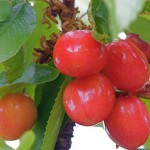A Photo Essay by Janice Tucker
~ Mighty oaks from little acorns grow.
Behold the seed pods – the vessels of life. Ingenious in design and practical in purpose, they nurture seeds to maturity. When the time is ripe, the pods release their young to be carried away by wind, water, or animals, or to simply fall to the earth, close to its mother plant to begin the cycle of life anew.
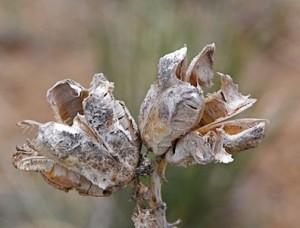
Soapweed yucca (Yucca glauca): Capsules are woody and oblong, containing numerous flat, dark seeds. Their thin ovary walls enable the pods to easily split open. Wind distribution of the seeds is facilitated by the upturned, chalice- shaped seed pods.
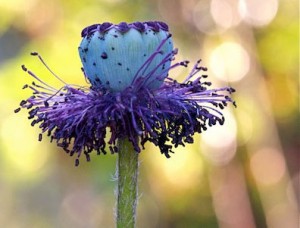
Poppy (Papaver species): Shake, rattle and roll! The poppy seed head contains thousands of tiny seeds. Once the seed capsule has dried, small holes become apparent. The capsule sways and shakes in the wind, dispersing the seeds like a pepper shaker.
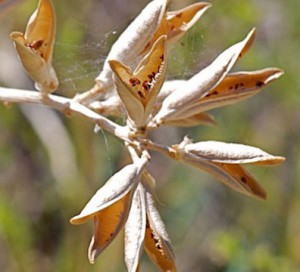
Stinking milkvetch (Astragalus praelongus): When dry, elongated pods crack open to release hundreds of elliptical, flat, shiny, brown seeds. It is the seed pod, not the flower that is most often considered when identifying the various Astragalus species.
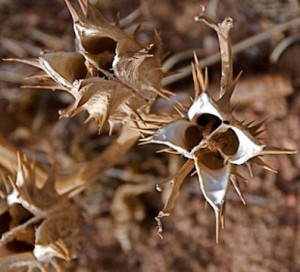
Jimsonweed, Sacred datura, Thorn-apple (Datura species): When mature, the hard, spiny or smooth capsules split into four compartments, each with many small, black seeds, primarily scattered by the wind.
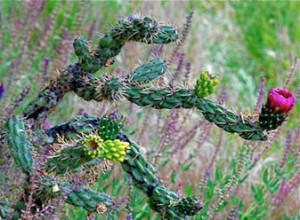
Tree cholla (Cylindropuntia imbricata): Yellow, cone-shaped seed pods of the Tree cholla remain after the flowers fall away. When the pods shrivel and crack open, the seeds spill to the ground. Gravity and animals are responsible for their spread.
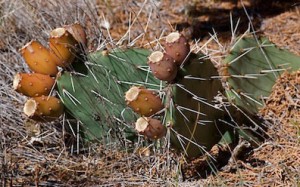 Prickly pear cactus (Opuntia species): The edible seed capsule is called tuna. Dispersal is due to animals and birds. The drying seed pods perched atop cacti pads resemble a group of spiny candelabra.
Prickly pear cactus (Opuntia species): The edible seed capsule is called tuna. Dispersal is due to animals and birds. The drying seed pods perched atop cacti pads resemble a group of spiny candelabra.
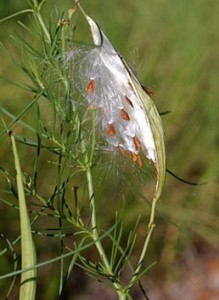
Poison milkweed (Asclepias subverticillata): Slender, elongated pods – shaped a bit like Aladdin’s lamp – split open to reveal parachute-shaped seeds clinging to tufts of silky hairs. Seeds are dispersed when the wind catches these tufts to carry them away.
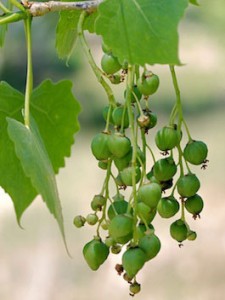
Rio Grande cottonwood (Populus deltoides): The graceful clusters of the female Cottonwood catkins open to disperse seeds encased in a cotton-like fluff, enabling the seeds to float away in the wind. A large Cottonwood produces millions of seeds, but only a small percentage will germinate.
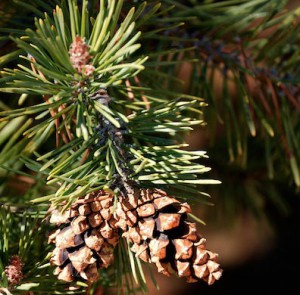
Pine cones (Pinus species): Don’t go out in the rain. The pine cone takes no chances with its precious seeds. It will close when wet and open when dry, ensuring the seeds will only be dispersed when they are dry and light enough to be carried by the wind some distance from the parent plant.
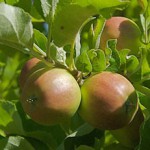 Apples, Pears, Cherries (Malus, Pyrus, Prunus species): The fleshy fruit that forms after flowering contains seeds in the core of the apple and pear and a stone seed in the cherry. These fruits are consumed by animals and birds, which account for their dispersal. If not consumed, the fruits dry on the tree limbs or when they fall to the ground, eventually exposing the seeds. Humans also eat the fruits and drop the cores and the pits on the ground. Either way, the seeds are spread – and the fruit enjoyed.
Apples, Pears, Cherries (Malus, Pyrus, Prunus species): The fleshy fruit that forms after flowering contains seeds in the core of the apple and pear and a stone seed in the cherry. These fruits are consumed by animals and birds, which account for their dispersal. If not consumed, the fruits dry on the tree limbs or when they fall to the ground, eventually exposing the seeds. Humans also eat the fruits and drop the cores and the pits on the ground. Either way, the seeds are spread – and the fruit enjoyed.
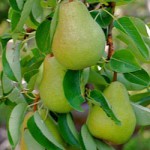
As these noble pods disperse their seeds into the world, whether by working in concert with wind, water, gravity or animals, they insure the survival of their species. They are, indeed, the vessels of life.
